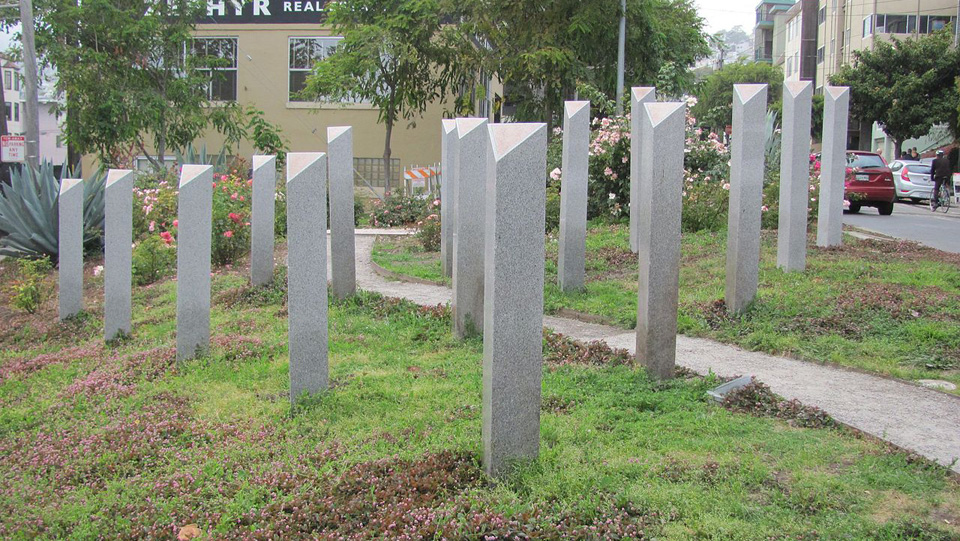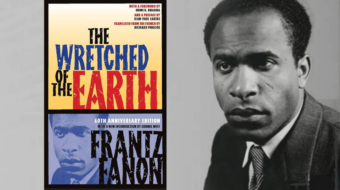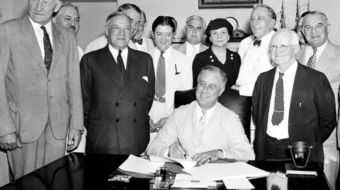
This week, during LGBTQ Pride Month, we recall the history of the pink triangle (in German, rosa Winkel), one of a number of Nazi concentration camp badges, used to identify male prisoners who were sent there because of their homosexuality. Every prisoner had to wear a downward-pointing triangle on their jacket, the color of which indicated their brand of “undesirable” in the Nazi system. Jews were forced to wear two superimposed triangles as a yellow star, red for political prisoners, etc.
The pink triangle was introduced in 1937.
Originally intended as a badge of shame, the pink triangle (sometimes seen with point upward) has been reclaimed as an international symbol of LGBTQ pride and the LGBTQ rights movement. It suggests the well-known slogan “Never again!” It is second in popularity only to the rainbow flag.
The number of gay men in German concentration camps is hard to estimate (German law did not affect lesbians). Historian Richard Plant gives a rough estimate of the number of men the Nazi régime convicted for homosexuality as between 50,000 and 63,000.
After the camps were liberated at the end of World War II, many of the pink triangle prisoners were often simply re-imprisoned by Allied occupied Germany. One openly gay man, Heinz Dörmer, served 20 years total, first in a Nazi concentration camp and then in the jails of the new republic.
By the mid-1970s, the pink triangle was adopted as a symbol for gay rights protest, no doubt linked to the 1972 publication of Heinz Heger’s memoir of gays in the concentration camps, The Men with the Pink Triangle. That book inspired Martin Sherman’s 1979 play Bent.
The first U.S. commemoration of the gays during the Holocaust took place in West Hartford, Conn., in 1976. It was inspired, in part, by the refusal of the Jewish community at that time to publicly acknowledge that homosexuals also had been targeted by the Nazis.
Many protest and remembrance groups have adopted the pink triangle into their iconography. The AIDS Coalition To Unleash Power (ACT UP) adopted an inverted pink triangle along with the slogan “SILENCE = DEATH” as its logo shortly after its formation in New York City in 1987.
In 1995, after a decade of campaigning, a pink triangle plaque was installed at the Dachau Memorial Museum to commemorate the suffering of gay men and lesbians. It forms the basis of the design of the Homomonument in Amsterdam, the Gay and Lesbian Holocaust Memorial in Sydney, the Pink Triangle Park in the Castro neighborhood of San Francisco and the huge one-acre Pink Triangle on Twin Peaks that is displayed every year during San Francisco Pride weekend. It also contributes to the design of LGBT memorials in Barcelona and Sitges in Spain; Montevideo, Uruguay; and Galveston, Tex. The Matthew Shepard Memorial Park in West Hollywood, Calif., is in the shape of a triangle.
On August 3, 2011, Rudolf Brazda died at the age of 98; he was the last known homosexual deportation survivor. His biography, Itinéraire d’un Triangle Rose (A Pink Triangle’s Life Journey) is available in four languages but so far not English.
Adapted from Wikipedia.










